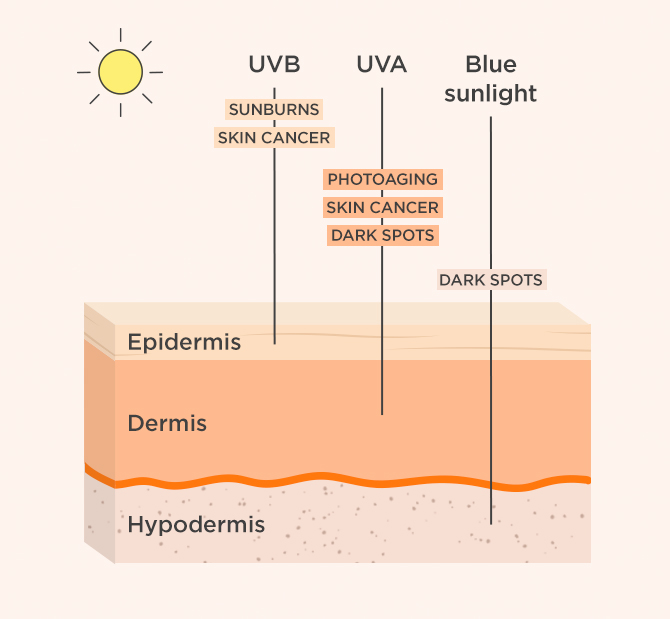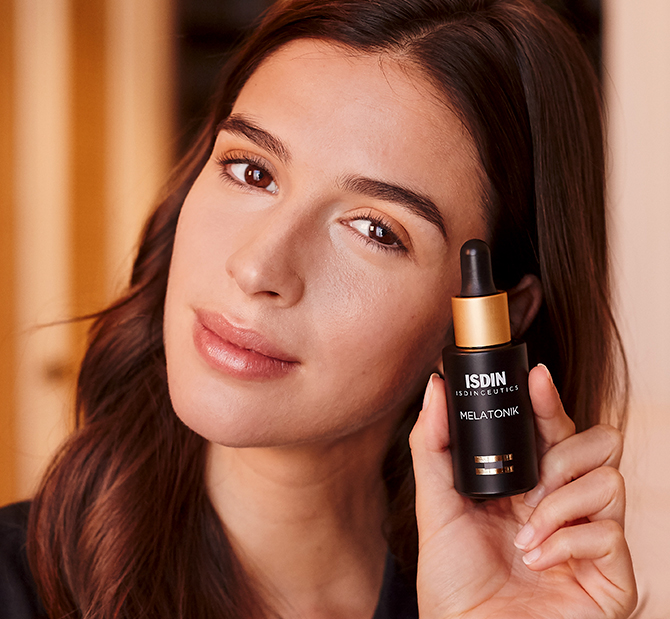[ad_1]
If you hear layers and think scarves and sweaters or this season’s trending haircut instead of your skin’s complex barrier system — well, that’s pretty understandable. But, grasping the basics of what’s going on inside your skin can help you better take care of it.
That’s why we’ve gathered the standout facts about each of your skin’s layers and their processes. Find out how each layer functions, how they age over time, and ways to support them.
Let’s dive in.
How many layers does my skin have?
Your skin is organized into three interdependent layers: the epidermis, dermis, and hypodermis.
You can think of your skin’s layers in the same way as bundling up to go out in a snowstorm. Each layer is essential and serves a different purpose. And much like your favorite garments, as the seasons go by, each ages in its own way.
Starting with the base layer that helps insulate us, we have the hypodermis. In the middle is your thick knit sweater AKA the dermis, helping provide strength and flexibility. To top it off comes the epidermis: the thin, waterproof shell that protects you from the elements.
Let’s find out which noteworthy functions take place in each layer, and how aging affects those processes.
What are the different layers of my skin?

Hypodermis: the bottom layer
First up? The trusty thermal layer for insulation. Also known as the subcutaneous tissue, the hypodermis functions as an energy storehouse.
This innermost layer is mainly made up of fat cells, attributing to the skin’s buoyancy, volume, and shape. This extra padding also helps to cushion muscles, bones, and organs in case of injury.
What’s even cooler? Fat in the hypodermis acts as natural insulation to help keep you from getting too cold.
Need-to-knows
Thank it for: Emergency energy reserves and insulation
How it ages:
- Volume of facial fat decreases, causing loss of plumpness
- Redistribution of facial fat can cause the appearance of sagging
How to care for it: Your daily choices and environment affect your overall health, including your skin’s functions. Taking care of your sleep schedule, diet, and other lifestyle factors can go a long way with deep-down skin health.
Dermis: the middle layer
Consider this the chunky knit sweater of skin layers. This supportive tissue contributes to skin structure, elasticity, and strength.
A healthy dermis is actually ten times thicker than the epidermis it sits underneath. Woven with blood vessels, connective tissue, and nerve endings, you can thank this layer for your sensitivity to temperature and touch.
Furthermore, the dermis is home to what’s called the extracellular matrix. This matrix contains three must-know components: collagen fibers, elastin fibers, and proteoglycans. Thick collagen fibers provide resistance, while thin elastin fibers offer elasticity. And moisture-heroes proteoglycans can store up to 1000 times their molecular weight in water. Hello, hydration!
But there are a couple of things you might not be so grateful to the dermis for. First up, acne. Pesky pimples can begin in the hair follicles and oil glands housed in this skin layer. Sebaceous or sweat glands are also found here — so you can also thank the dermis for your spin-class aftermath.
Need-to-knows
Thank it for: Your skin’s elasticity, resiliency, and plumpness
How it ages:
- Elastin and collagen fibers break down, decreasing skin’s thickness, firmness, and elasticity
- Proteoglycans diminish, drying out skin
How to care for it: Stock up on deeply hydrating serums. And look out for products with a combination of proteoglycans and pre-proteoglycans to support firmness and elasticity in the skin.

Epidermis: the top layer
What’s the last layer you rely on when bundling up for harsh weather? If you’re thinking of a thin-yet-strong weather-resistant shell, then your skin’s on the same page.
Serving as the primary protective barrier against environmental aggressions, like toxins, bacteria, and harsh weather conditions, this outer layer is only about as thick as a sheet of paper.
The epidermis is mostly made up of cells called keratinocytes, which contain a fibrous protein that might sound familiar: keratin. These cells act like bricks and stick together with a mortar-like mixture of fatty acids and water to form the outermost layer of the epidermis: the skin barrier. This barrier is like a brick wall that provides your skin with much-needed protection.
Keratinocytes are constantly on the move, rising from the lower epidermis to the skin barrier. As they mature, they reach the skin’s surface and their bond with the fatty acid-mortar weakens. The result? Natural skin turnover and exfoliation.
Last but not least, don’t forget to thank the epidermis for your skin’s unique color, pigmentation patterns, and photoprotection abilities. Why? It’s responsible for melanogenesis: the way skin reacts to UV radiation (mainly UVA rays and blue sunlight) by producing melanin.
Need-to-knows
Thank it for: Protection from environmental stressors
How it ages:
- Cell renewal slows, causing rough skin texture
- Free radicals and other toxins begin to accumulate, increasing the look of fine lines and wrinkles
- The distribution of melanin becomes irregular, causing uneven pigmentation
How to care for it: Exfoliation helps get rid of dead skin cells and encourages healthy turnover — meaning it can also help to brighten and smooth out your skin texture. For extra TLC, add in a restorative antioxidant serum to battle the effect of free radicals.

The final layer
Understanding the basics of your skin structure can help you make smarter skincare decisions. And there’s one important daily skincare decision every layer of skin will thank you for: sunscreen! Pro tip: remember to apply it daily and throughout the day following the label’s instructions.
Discover our line of high SPF, broad spectrum sunscreens.
References
Paul A.J. Kolarsick, BS, Maria Ann Kolarsick, MSN, ARNP-C, and Carolyn Goodwin, APRN-BC, FNP. (n.d.). 1 SS skin cancer chapter 1 - ons | ons.org. https://www.ons.org/. Retrieved February 8, 2022, from https://www.ons.org/sites/default/files/publication_pdfs/1%20SS%20Skin%20Cancer_chapter%201.pdf Videira IF, Moura DF, Magina S. Mechanisms regulating melanogenesis. An Bras Dermatol. 2013;88(1):76-83. doi:10.1590/s0365-05962013000100009 Skin: Layers, structure and function. Cleveland Clinic. (n.d.). Retrieved February 8, 2022, from https://my.clevelandclinic.org/health/articles/10978-skin
[ad_2]


